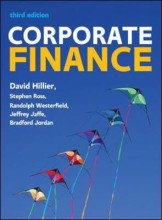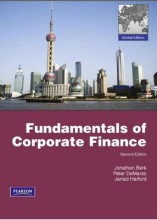Long-term financing and valuation of firms with debt
15 important questions on Long-term financing and valuation of firms with debt
What 3 tasks do investment banks fulfil in share trading?
2. Determine price of these securities
3. Sell relevant securities
What are the 3 methods to issue shares for cash for investment banks?
2. Best efforts - Investment bank avoids risk by not purchasing shares, but acts as an agent and receives commission for every share sold
3. Dutch auction underwriting - A fixed price is not set, but determined in an auction style setting
What is green shoe provision?
- Higher grades + faster learning
- Never study anything twice
- 100% sure, 100% understanding
Why does the market value of a company declines when new issue of equity capital is announced?
2. Debt capacity - Companies choose their d/e ratio by balancing tax benefits of debt and financial distress costs. If issuance of equity is more profitable, it may show signs of financial distress coming
3. Decreasing income - Large issuance can point to decreasing revenues, as internal financing is clearly needed
What are the costs of issuing new equity?
2. Other direct expenses - Costs incurred by the emission of shares other than compensation for the intermediary
3. Indirect expenses - Indirect costs e.g. number of man-hours necessary for emission
4. Abnormal returns - Share price will usually decrease after announcement
5. Underpricing - undervaluing the share
6. Green shoe option - buying more shares than issuer was planning to in the first case
What is a subscription price?
What is shelf registration?
What are the 2 types of loan commitments?
2. A non-revolving loan commitment - a loan where the firm cannot pay down the loan and then subsequently increase the amount of borrowing
What is the difference between the clean and dirty price of a bond?
Why would a firm opt for call provision?
2. Taxes - call provision may lead to an advantage if creditor is less taxed than company providing the loan
3. Future investment opportunities - calling bonds frees up money
4. Less interest rate risk - Call provision ensures that the bond is less sensitive to changes in interest rate, as its rate is higher
What is MM proposition IV?
What are the 3 DCF valuation methods?
2. Adjusted present value method
3. Flow to equity method
In which situations should you use the WACC method?
2. When analysing multiple periods with a constant D/E ratio
3. When firms are in a stable situation
What is the APV method?
What is the FTE method?
The question on the page originate from the summary of the following study material:
- A unique study and practice tool
- Never study anything twice again
- Get the grades you hope for
- 100% sure, 100% understanding
































